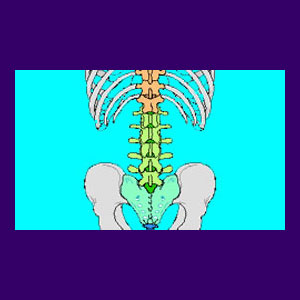
Isthmic spondylolisthesis is a vertebral misalignment issue which affects many patients, typically in the lower lumbar region. The occurrence of misaligned vertebral bones has been blamed for enacting many painful syndromes, neurological symptoms and disabilities by doctors of all varieties. The reality of this condition is rarely so cruel, as most minor cases are completely innocent and asymptomatic.
Spondylolisthesis has joined the list of common back pain scapegoats, when in fact it is rarely the actual cause of any problematic symptoms in its milder forms. It should be noted that the overwhelming majority of diagnosed patients have slippage of less than 10%.
This essay profiles one of the most common of all vertebral migration diagnoses: spondylolisthesis of the isthmus variety.
Degrees of Isthmic Spondylolisthesis
Spondylolisthesis is measured in degrees of slippage. Most cases are mild, with the affected vertebrae being less then 25% out of position in the spine. These cases are almost always asymptomatic or only mildly symptomatic. Slippage of 25% to 50% is moderate and might entail some physical symptoms and restrictions in patient functionality. Slippage between 50% and 75% is severe and might cause actual pain and disability.
Complete vertebral slippage is called spondyloptosis. Complete slippage of a vertebral bone is a very serious health concern and often results in spinal instability. Fortunately, most patients demonstrate very mild to mild vertebral slippage in the L4 or L5 vertebrae.
Congenital Spondylolisthesis
Congenital cases of spondylolisthesis are usually among the least symptomatic. If you have been born with an existing minor misalignment or a pre-disposition to develop vertebral slippage, there is probably no need for worry. Chances are that your body will develop normally and acclimate to your spondylolisthesis as you grow. Symptoms are sometimes present during periods of rapid growth, but usually resolve on their own. Severe congenital spondylolisthesis is extremely rare, but can be a horrific ordeal for those affected.
Children with minor congenital vertebral slippage should be reassured that they are ok and should not suffer any significant negative effects from their spinal abnormality. If not, there is a good chance that fear will create the ideal circumstances for a psychosomatic back pain condition to develop as the child ages.
Isthmic Spondylolisthesis Guidance
If you have severe vertebral slippage as a result of a serious back injury or severe degenerative back pain condition, than treatment will usually be necessary. Most of you will have a small slippage that actually has little or no effect on your spinal function or nerve signal. Do not be intimidated by these mild forms of spondylolisthesis. The nocebo effect of the diagnosis can be severe and may produce pain when none would normally stem from the condition itself.
If you do have serious slippage, make sure to discuss back pain treatment choices and expectations carefully with your physician. It is always best to explore all options before making a choice.
If you have been advised to have spondylolisthesis surgery, make sure to get a second opinion before undergoing any drastic and possibly life altering procedure. Remember, almost all surgical interventions utilize a form of spinal fusion and may have more downside than benefit for some patients.





